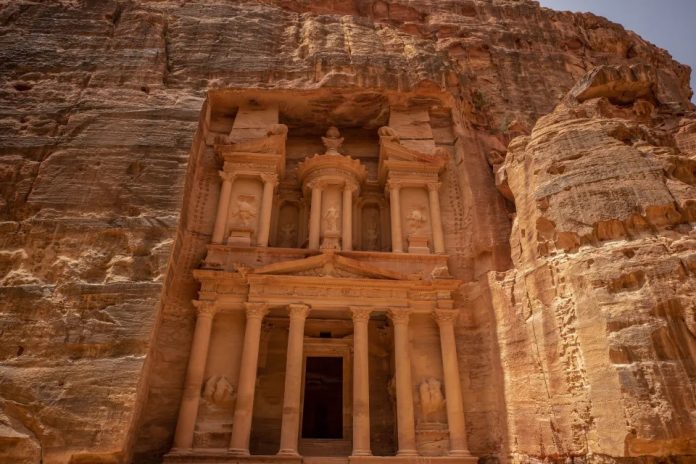Archeologists, led by Dr. Pearce Paul Creasman from the American Center of Research, have uncovered a significant tomb beneath the iconic Khaznah (Treasury) in Petra, Jordan. This tomb, containing at least 12 human skeletons and various artifacts, is estimated to be over 2,000 years old and offers new insights into the Nabataeans, an ancient Arabian civilization that thrived from the 4th century BC to AD 106.
The discovery follows years of speculation after two tombs were uncovered in 2003 on the left side of the Treasury. Ground-penetrating radar revealed physical similarities on the right side, prompting the Jordanian government to approve further excavation. The new tomb was found intact, which is rare in Petra, as most previously discovered tombs had been disturbed. Among the artifacts recovered were bronze, iron, and ceramic goods, as well as a ceramic chalice resembling the Holy Grail, an iconic reference from popular culture.
This tomb provides a rare glimpse into Nabataean burial practices, which remain largely mysterious. Unlike other ancient civilizations, there seems to be little distinction between royal and commoner burials in Petra. However, due to the prime location of the burial site, archeologists believe the individuals were of great importance. The discovery raises new questions about the lives and customs of the Nabataeans, as well as the possibility of more undiscovered tombs in the area.
Further studies, including DNA analysis and skeletal examinations, are expected to shed light on who these individuals were, their diets, and whether they had physically demanding jobs. Despite the damage caused by moisture and seasonal flooding, this discovery marks one of the largest collections of human remains found in Petra and may help unlock more secrets about the Nabataean civilization and the purpose of the Treasury monument itself.















